Titanic (1912) |
|
Capt. Edward J. Smith, RD, RNR (1850-1912) |
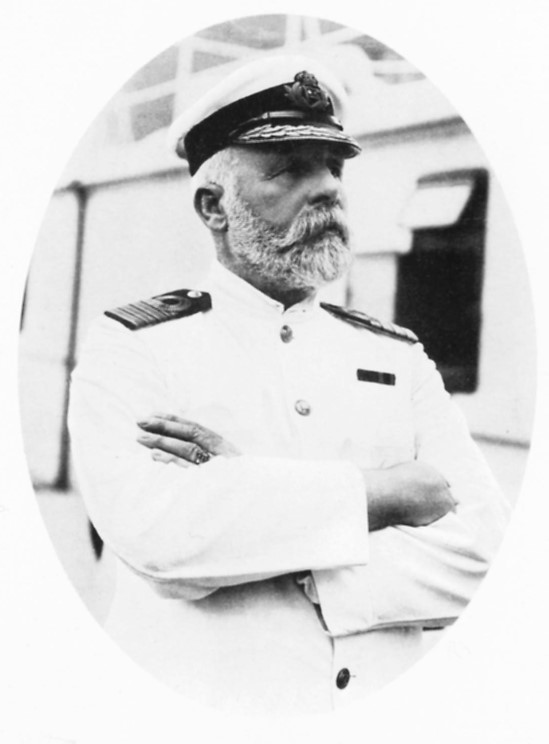 |
Captain Edward J. Smith.
|
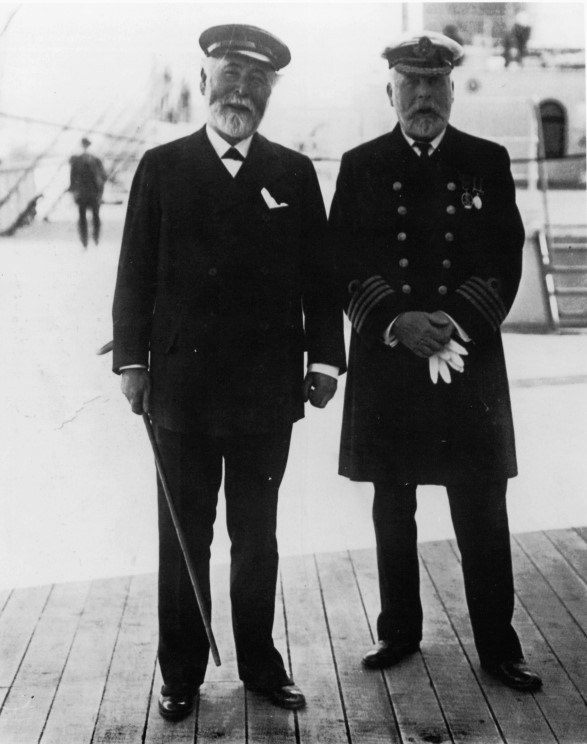 |
Lord William J. Pirrie, Chairman of Harland & Wolff (left) and Captain Edward J. Smith.
|
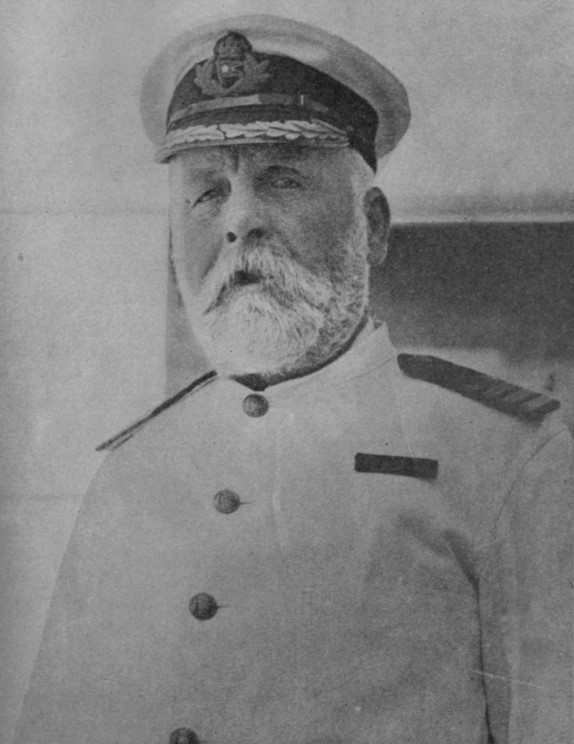 |
Captain Edward John Smith
|
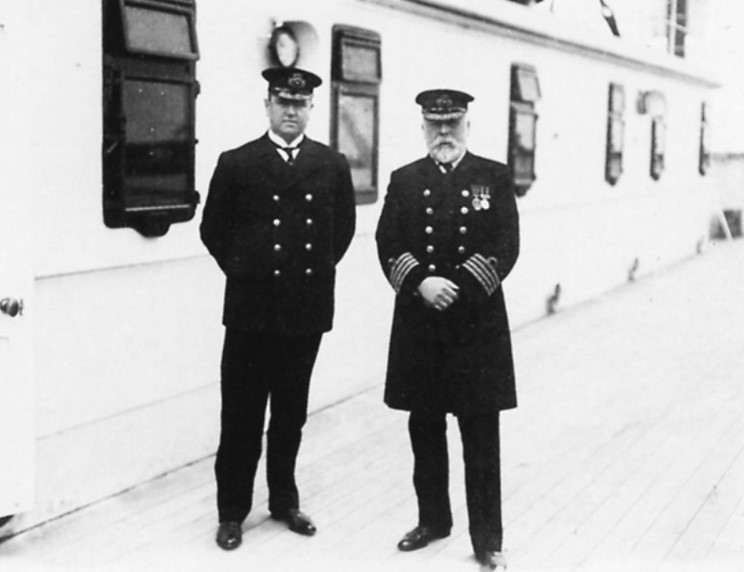 |
Chief Purser Hugh W. McElroy (left) and Capt. Edward J. Smith, both died on Titanic.
|
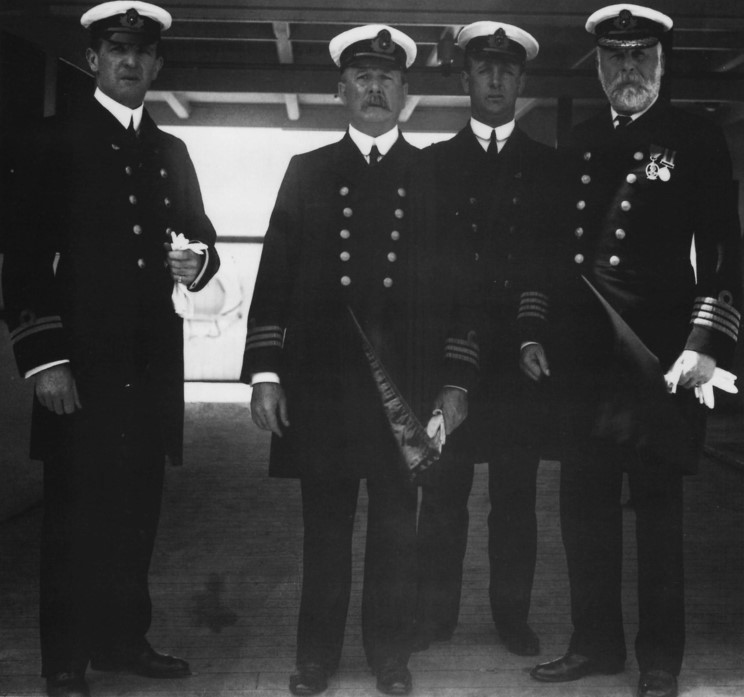 |
From left to right: First Officer William M Murdoch, Chief Officer Henry T. Wilde, an unidentified officer and
|
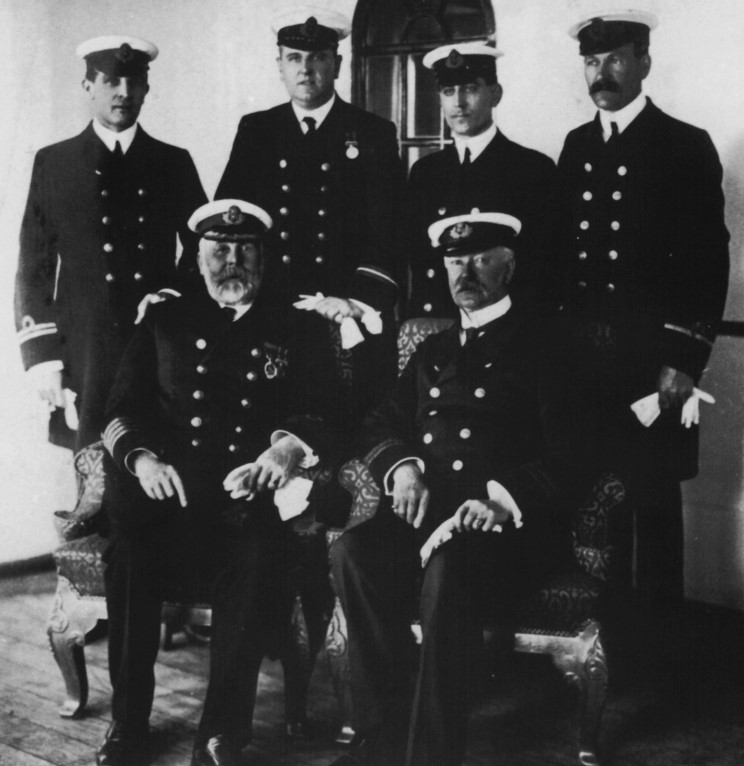 |
Captain Edward J. Smith (seated left), Chief Purser Hugh W. McElroy (standing second from left), Third Officer
|
Edward John Smith was born on January 27, 1850 in the town of Hanley, Stoke-on-Trent. His parents were Edward Smith, a potter, and Catherine Hancock née Marsh, who married in 1847 in Wolstanton. His parents later owned a shop. Smith attended the Etruria British School until the age of 13 when he went to Liverpool to begin a seafaring career. He apprenticed with Gibson & Co., Liverpool. On July 12, 1887, Smith married Sarah Eleanor Pennington. Two years later, they had a daughter Helen Melville Smith. The family lived in an imposing red brick, twin-gabled house, named "Woodhead", on Winn Road, Portswood, Southampton. According to his daughter, Captain Smith loved cigars and the smoke from them. He wouldn't let anyone into his study while he was smoking because he didn't want the ring of smoke to be disturbed. Smith joined the White Star Line in March 1880 as the Fourth Officer of the Celtic. He served aboard the company's liners to Australia and to New York, where he quickly rose in stature. In 1887, Smith received his first White Star command, the SS Republic. In 1888, Smith earned his Extra Master's Certificate and joined the Royal Naval Reserve (thus enabling him to append his name with "RNR"), qualifying as a full Lieutenant. This meant that in a time of war, Smith and his ship could be called upon to serve by the Royal Navy. Because of his position as a Commander in the Royal Naval Reserve, Smith had the distinction of being able to fly the Blue Duster of the R.N.R.; most ships flew the Red Duster of the merchant marine. Smith was Majestic's captain for nine years commencing in 1895. When the Boer War started in 1899, Smith and the Majestic were called upon to transport troops to Cape Colony. Two trips were made to South Africa , both without incident, and for his service, King Edward VII awarded Smith the Transport Medal, showing the " South Africa " clasp, in 1903. Smith was regarded as a "safe captain". As he rose in seniority, Smith gained a reputation amongst passengers and crew for quiet flamboyance. Eventually Smith became the commodore of White Star Line, or one who all other captains reported to. Some passengers would only sail the Atlantic in a ship commanded by him. He became known as the "Millionaires' Captain" due to the fact that England 's upper class were usually the ones who requested he be in command of the ships they sailed on. After he became commodore of the White Star fleet in 1904, it became routine for Smith to command the line's newest ships on their maiden voyages. In 1904, he was given command of the largest ships in the world at the time, White Star's new Baltic. Her maiden voyage from Liverpool to New York, sailing 29 June 1904, went without incident. After three years with the Baltic, Smith was given his second new "Big Ship", the Adriatic. Once again, the maiden voyage went without incident. During his command of the Adriatic, Smith received the Royal Naval Reserve's "Long Service" medal along with a promotion at White Star to Commander. He would now sign his name as "Commander Edward John Smith, R.D., R.N.R.", with "R.D." meaning "Reserve Decoration." Smith had built a reputation as one of the world's most experienced sea captains, and so was called upon to take first command of the lead ship in a new class of ocean liners, the Olympic-again, the largest vessel in the world at that time. The maiden voyage from Liverpool to New York was successfully concluded on 21 June 1911, but as the ship was docking in New York harbour, it experienced a small incident which would foreshadow future events. Docking at Pier 59 under command of a harbor pilot, the Olympic was being assisted by twelve tugs when one got caught in the backwash of the Olympic's starboard propeller. The tug was spun around, collided with the bigger ship, and for a moment was trapped under the Olympic's stern, finally managing to work free and limp to the docks. White Star's most prized captain was yet again at the helm of the greatest steamship when Titanic left Southampton for her maiden voyage. Although some sources state that Smith had decided to retire after commanding the RMS Titanic on its maiden voyage, an article which appeared in the Halifax Morning Chronicle on 9 April 1912 stated that Captain Smith would remain in charge of the Titanic "until the Company (White Star Line) completed a larger and finer steamer". On April 10, 1912, Smith, wearing a bowler hat and a long overcoat, took a taxi from his home to Southampton docks. He came aboard the Titanic at 7AM to prepare for the board of trade muster at 8.00AM. He immediately went to his cabin to get the sailing report from Chief Officer Henry Wilde. After departure at 12:00PM, the huge amount of water displaced by Titanic as she passed caused the laid-up New York to break from her moorings and swing towards the Titanic. Quick action from Smith helped to avert a premature end to the maiden voyage. The unfortunate incident was seen by some as an ill omen and it was reminiscent of the Hawke incident in 1911 when that vessel collided with the Olympic, under the command of Captain Smith. At 11:40PM, on 14 April, the Titanic struck an iceberg in the North Atlantic. The ship sank two hours and forty minutes later killing an estimated 1,500 people. It is still unknown how Captain Smith died. Some say he committed suicide by shooting himself, others say he went down with the ship, and some claim to have seen him in the water cheering the passengers to survive. His body was never recovered. It is not known how Smith died on the night of the sinking. Some survivors reported seeing him in the water with a life jacket, while others reported seeing him in the bridge wheelhouse as the open bridge flooded. In Robert Ballard's book, The Discovery of the Titanic, he claims that Captain Smith went into the bridge to await his fate at 2:13AM, three minutes before the final sinking. This idea is used by the 1997 film. Still, one other passenger claimed to have seen Smith swim back into the A Deck Promenade, soon after which he was sucked back inside the Grand Staircase when the windows gave way. The Titanic struck the iceberg at around 11:40PM, but did not sink until around 2:20AM the following day. This would make Captain Smith's date of death April 15, 1912. Also in question were his last words. Reports include "Be British Boys, Be British!", "Every Man for Himself!" or, after supposedly delivering a baby to a lifeboat, he refused to be brought aboard, saying "Good-Bye Boys, I'm going to follow the ship!" |
(Text courtesy of Wikipedia)
|
Page published Dec. 2, 2007 |